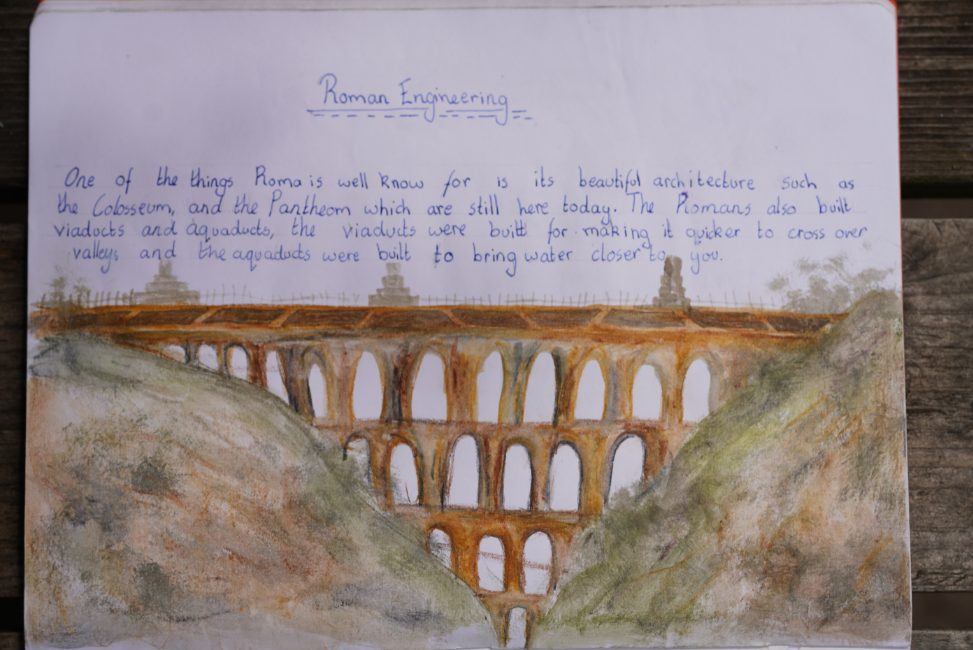Hadrian’s Wall: A Staple Steiner Waldorf School Trip
June 6 2023

An outbound excursion to World Heritage site Hadrian’s Wall in Northumberland is a staple of the Steiner Waldorf Class 6 curriculum, where the pupils get to explore its roman history over several days.

The Summer Term is generously sprinkled with healthy nerves as Classes perform plays and head off-campus on days long excursions. A school trip to Hadrian’s Wall in Northumberland is a staple of the Steiner Waldorf Class 6 curriculum, both at Edinburgh Steiner School and many Waldorf schools in the rest of the UK.
By age twelve, children are ready to experience causality in history. Learning focuses increasingly on human confrontation. This field trip leads on from the Roman Britain Main Lesson brought to these young teens earlier in the academic year, learning about the Republic, the Empire.

Through the study of history the children encounter the natural law of cause and effect. Their growing capacity to think causally is deepened by sequencing of the subject matter so that the past can be seen as a meaningful process leading up to present times. In this journey it becomes evident that the human race has played a profoundly influential role in shaping history. The study begins with Alexander the Great, moves on to the rise and fall of the Roman Empire and culminates in the Middle Ages and Islam.

Built to guard the wild north-west frontier of the Roman Empire by the Roman army on the orders of the emperor Hadrian following his visit to Britain in AD 122, in 2022 Hadrian’s Wall commemorated 1900 years.
At 73 miles (80 Roman miles) long, it crossed northern Britain from Wallsend on the River Tyne in the east to Bowness-on-Solway in the west, ‘from sea to sea to separate the barbarians from the Romans’.[1]

In the years that followed, Hadrian’s Wall became a quarry for the stone to build castles and churches, farms and houses along its line, until the conservation movement in the 18th and 19th centuries put a stop to that. It was only from the mid 19th century onwards that early archaeologists and historians such as John Clayton, John Hodgson and John Collingwood Bruce began to study Hadrian’s Wall in earnest and sought to protect its still magnificent remains.

The most famous of all the frontiers of the Roman empire, Hadrian’s Wall was made a UNESCO World Heritage Site just 35 years ago, in 1987.
Staying in a hostel for several nights near the landmark, and taking part in a long walk, the pupils get to explore the location’s rich roman history and its dramatic landscapes with rare roman artefacts, discovering the remains of the forts, towers, turrets and towns that once kept watch over the Wall.
The long walks give the pupils more of the physical rigor that is celebrated in the Class 5 Olympics, and extends it into more of a Roman march of endurance. We also add more intellectual stimulation than on previous trips as the pupils will receive a lecture at Vindolanda Museum, before applying it to the ancient fort’s ruins almost immediately.
Each day there will be a physical and intellectual element to balance the needs of this age.

Read on: Edinburgh Steiner School’s weekly ezine
News pieces:
School calendar dates
College News
Management Surgeries
PTA
Presentation By Eurythmy West Midlands At School
Families Invited To Whole School Field Day
Ecfest Concerto Finalist in Concert
Math For Love Parents Evening With Dan Finkel
Classes 1 – 4 Invited To Class 12’s Play
Hadrian’s Wall: A Staple Steiner Waldorf School Trip
Adverts from school community

